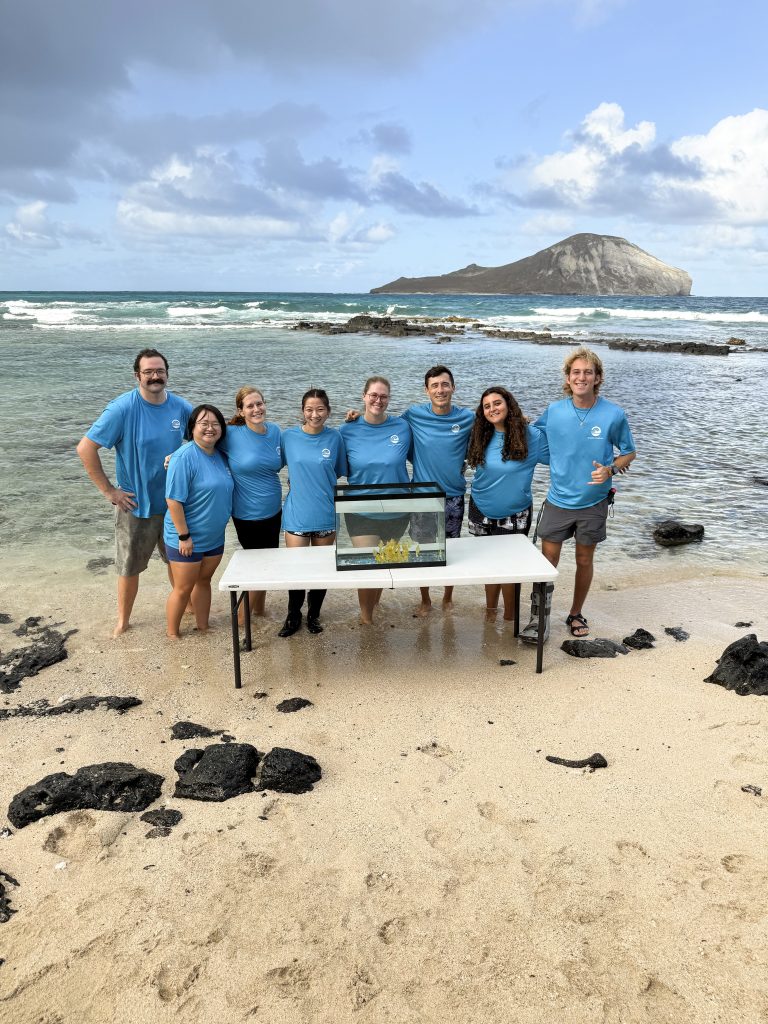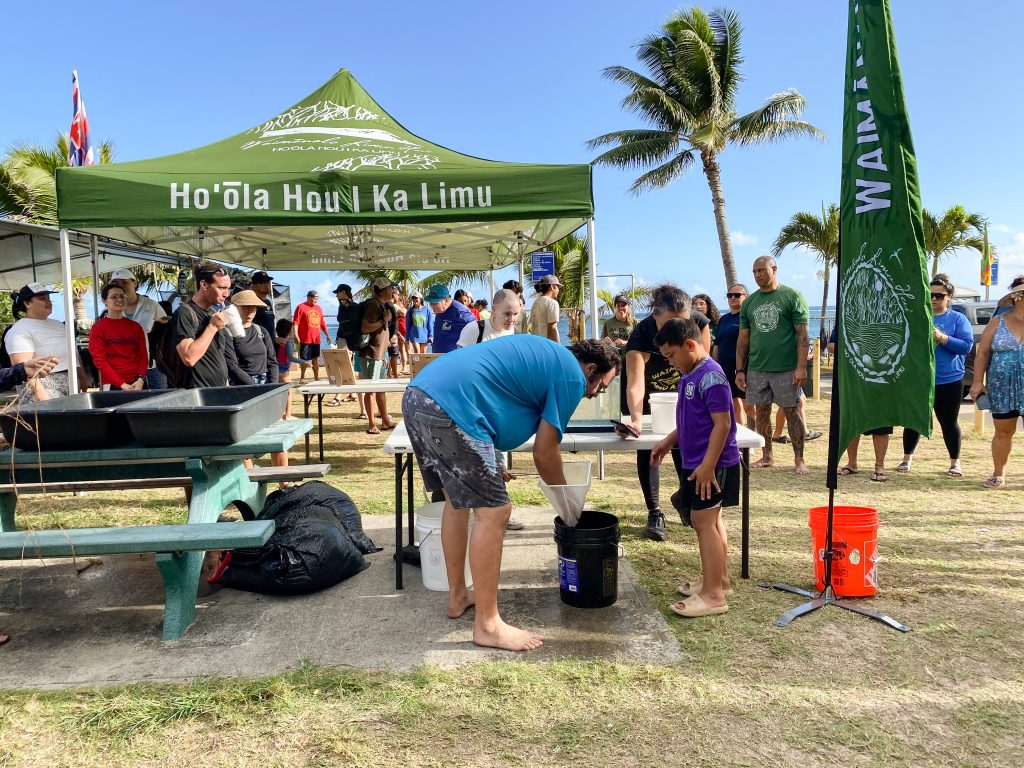Oceanic Institute of Hawaiʻi Pacific University release hundreds of aquacultured yellow tangs into wild to support coral reef health

The Oceanic Institute of Hawaiʻi Pacific University marked a historic milestone last week by releasing over 300 aquacultured juvenile yellow tang (lauʻīpala) into the waters of Oʻahu. This initiative, carried out in collaboration with Georgia Aquarium and Disney’s Aulani Resort, represented the first documented release of fish in Hawaiʻi aimed specifically at ecosystem restoration rather than food production—a significant step toward preserving Hawaiʻi’s coral reefs.
In preparation for the release, a biologist from the Hawaiʻi State Department of Land and Natural Resources inspected the juvenile yellow tang shortly before the release to ensure they were free of any pathogens, safeguarding the local reef ecosystem. The project’s focus on ecosystem health showcased a novel model for reef restoration efforts in Hawaiʻi, highlighting the potential for aquaculture to play a vital role in marine conservation.
Oceanic Institute (OI) Executive Director Shaun Moss, Ph.D., remarked on the broader implications of the project. “The release of these iconic coral reef fish into our nearshore waters represented a historic, watershed moment for OI, HPU, and the State of Hawaiʻi. This represents a tremendous opportunity to add another important tool in our collective toolbox to protect our coral reefs for future generations.”
OI’s release marked the culmination of years of dedicated research and partnership. Through extensive trials, researchers at OI first succeeded in producing fertilized eggs in captivity, and after a decade of further study, identified the specific plankton needed to sustain baby yellow tang through their juvenile stages. This approach provided a sustainable alternative to wild-caught yellow tang for the aquarium trade. With financial support from Georgia Aquarium, OI partnered with Disney’s Aulani Resort Rainbow Reef Aquarium to harvest and transport fertilized eggs from their exhibit tanks to OI’s facilities.
A surplus in yellow tang production allowed OI to expand conservation efforts beyond aquarium display. With DLNR approval, OI released these aquacultured fish into the wild, providing the reef with natural grazers to control algae and support greater biodiversity. As herbivores, yellow tang play a vital role in coral reef health by controlling algae, preventing it from overwhelming the coral and thus promoting coral growth and resilience.
The release on Saturday coincided with a gathering of the Waimānalo Limu Hui, a community organization focused on restoring native limu (seaweed) in Waimānalo Bay. Hui volunteers outplanted limu after the release by a crafting limu lei and submerging them on rocks. In a gesture symbolizing respect, Ikaika Rogerson, president of the Waimānalo Limu Hui, offered limu lei to Kanaloa, the Hawaiian god of the sea.
With an estimated $33 billion in value, Hawaiʻi’s coral reefs contribute around $800 million annually to the local economy, supporting food resources, medicine, storm protection, and tourism while holding deep cultural significance. Despite this, threats from climate change, pollution, and invasive species have increasingly jeopardized their survival.
Rafael Jacinto, Animal and Water Sciences Operations manager at Aulani, A Disney Resort & Spa, emphasized the educational impact of this collaboration. “The fish in Aulani Resort’s Rainbow Reef essentially act as ambassadors to Hawai‘i. Every day, they help educate our visitors about their fragile reef environment and the actions we can take to protect them. Through this program, we are happy to be playing a role in continuing their sustainability message beyond Aulani Resort, into other aquariums, and now back into the ocean.”
The milestone release demonstrated how aquaculture can directly support reef health and serves as a model for future restoration efforts across Hawaiʻi. Through this initiative, OI and its partners seek to set a foundation for using ecosystem services to preserve Hawaiʻi’s coral reefs for generations to come.
To learn more about OI and their finfish department, click here.














